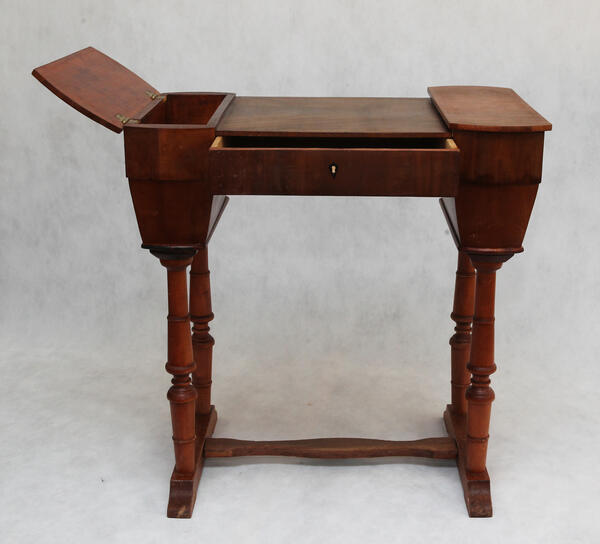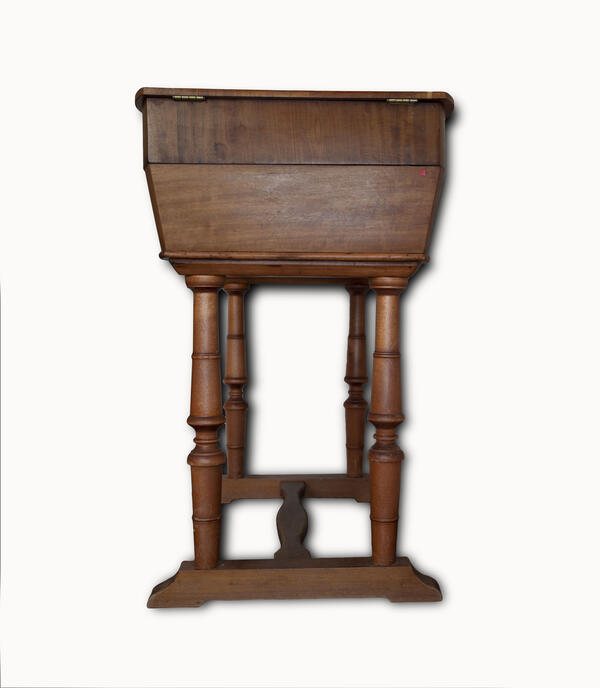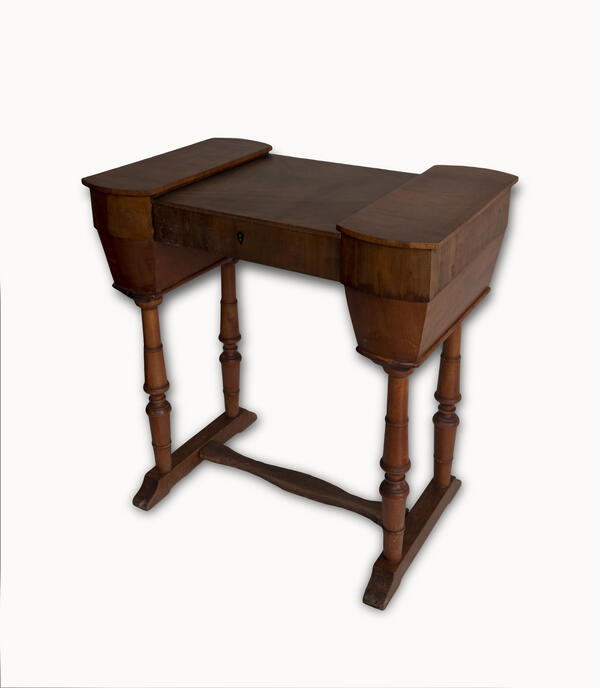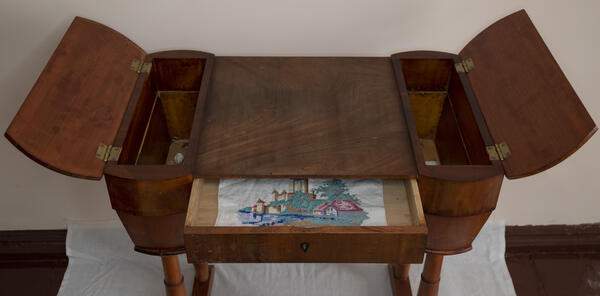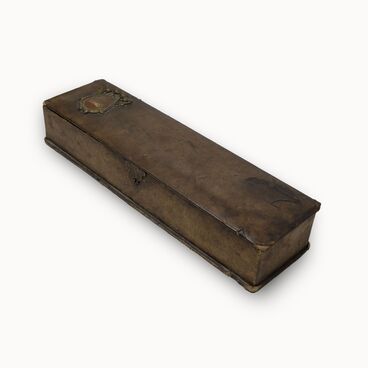During the 18th — 19th centuries, handicraft was taught to women from childhood and practicing it was considered one of a lady’s best qualities and virtues. Even the most noble ladies strove to be proficient in various types of handicraft, such as embroidery, beadwork, turning ivory and amber on the lathe, and miniature painting. Such activities were welcome even during social gatherings: the novel “War and Peace” by Leo Tolstoy has a scene where young Princess Bolkonskaya arrived in the living room of Anna Pavlovna Scherer with “some work in a gold-embroidered velvet bag.”
Scissors, needle cushions, and thimbles were true works of art. Skillfully made craft tables served as decoration for drawing rooms, ladies’ boudoirs, and offices to emphasize the painstaking artistic effort of a lady of the house.
In addition to their intricate design, needlework tables had a lot of useful functions. They were usually foldable and could be used as a jewelry box or a stand for sheet music, as well as for writing, drawing, and reading. Many of them had at least one hidden sliding tabletop and a large number of pull-out compartments and drawers.
Craft tables came in a wide variety of designs and shapes. They had different characteristics and their own secrets depending on the type of work. Some tables had a kind of basket made of thin strips for storing yarns, and tables with an adjustable embroidery hoop stored under the lid. Needlework was also done at small convenient tables with a tabletop shaped like a bean seed. They could easily be moved to a window or a sofa and were used for writing letters and reading books.
Unlike gilded massive furniture that was arranged along the walls of a living room, craft tables were light and could be reorganized and moved from one room to another. During the day, they were placed closer to the window, and later they were moved to a sofa and used for handiwork by candlelight until late in the evening.
Scissors, needle cushions, and thimbles were true works of art. Skillfully made craft tables served as decoration for drawing rooms, ladies’ boudoirs, and offices to emphasize the painstaking artistic effort of a lady of the house.
In addition to their intricate design, needlework tables had a lot of useful functions. They were usually foldable and could be used as a jewelry box or a stand for sheet music, as well as for writing, drawing, and reading. Many of them had at least one hidden sliding tabletop and a large number of pull-out compartments and drawers.
Craft tables came in a wide variety of designs and shapes. They had different characteristics and their own secrets depending on the type of work. Some tables had a kind of basket made of thin strips for storing yarns, and tables with an adjustable embroidery hoop stored under the lid. Needlework was also done at small convenient tables with a tabletop shaped like a bean seed. They could easily be moved to a window or a sofa and were used for writing letters and reading books.
Unlike gilded massive furniture that was arranged along the walls of a living room, craft tables were light and could be reorganized and moved from one room to another. During the day, they were placed closer to the window, and later they were moved to a sofa and used for handiwork by candlelight until late in the evening.

